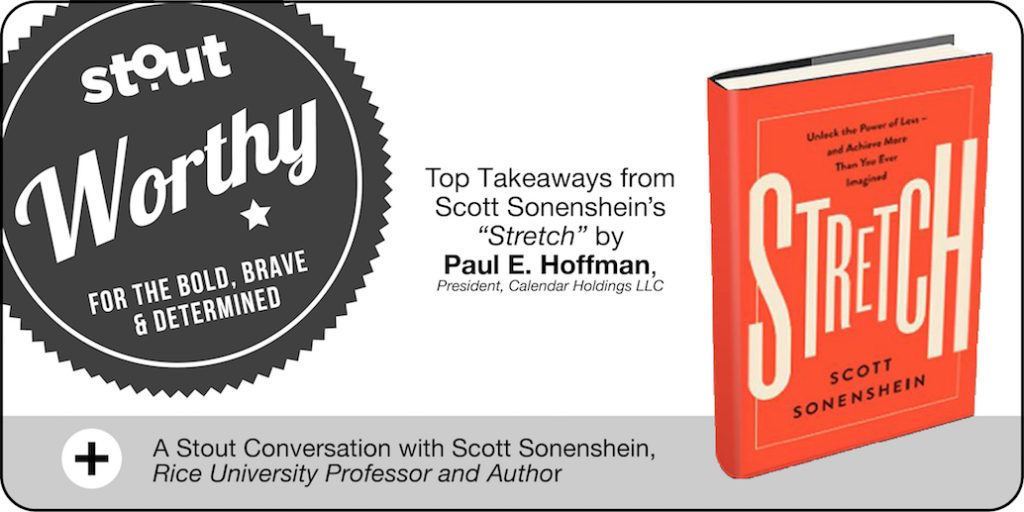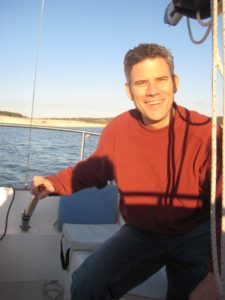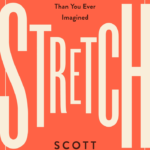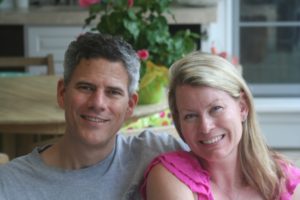
Stoutworthy: Takeaways from the book Stretch with Paul E. Hoffman President, Calendar Holdings LLC and author Scott Sonenshein
Paul E. Hoffman’s takeaways on applying Stretch principles at Go! Retail Group
- Use your existing assets.
Stretching can be a powerful way to reduce your organization’s expenses and improve your bottom line. - Involve the entire company.
When employees are encouraged to stretch, their creativity and sense of success will soar.

Paul E. Hoffman, President, Calendar Holdings LLC
Being “stretchy” has always been a part of our company culture, but Scott’s book has helped to reinforce this for us! We are in the retail business, with tight margins and increasingly fierce competition. We read nearly every day about US retailers closing stores, and the retailers who are still around are being forced to re-think their businesses – starting with reducing corporate overhead wherever possible. Making the most out of existing assets (i.e. “stretching”) should be a fundamental part of any strategy to reduce costs and conserve cash. It certainly is in our business!
 As a recent example of this, our store design group showed me a new store fixture they created entirely out of existing fixture components – no need to buy anything new! This fixture will be a prominent part of our seasonal store layout later in 2017. It is a perfect example of stretching, which has many benefits: not only saving us money by making the most out of existing assets, but also by promoting creativity within the design team and giving them a strong sense of success when they see their design used in hundreds of retail stores.
As a recent example of this, our store design group showed me a new store fixture they created entirely out of existing fixture components – no need to buy anything new! This fixture will be a prominent part of our seasonal store layout later in 2017. It is a perfect example of stretching, which has many benefits: not only saving us money by making the most out of existing assets, but also by promoting creativity within the design team and giving them a strong sense of success when they see their design used in hundreds of retail stores.
Paul’s (& wife Amy’s) takeaways on applying Stretch principles at home
- Creating a solution the “hard way” is fulfilling.
It is much more fulfilling to solve a problem the “hard way” (using existing resources) rather than the “easy way” (ordering the perfect thing from Amazon). - Stretching is liberating.
It leaves us with the hope of being satisfied with what we have which brings liberation from nearly constant wanting. - There’s strength in being self-reliant.
There is a strong appeal to being self-reliant, at least for basic things. I have always kind of wanted to live “off the grid.” Stretch reinforced that idea for me and gave me renewed inspiration that it might be more possible than I think! After all, we have solar panels on our roof (although I didn’t make them from parts around the house) and now we have a couple of chickens in our backyard (Amy and my daughter Annie’s latest project).
I grew up in a family that didn’t have the means to simply run out and buy things whenever we needed or wanted them. We were forced to “stretch”! Lacking financial resources, I invented things throughout my childhood: bike “repairs” with parts that didn’t quite fit, a newspaper launcher to help with my paper route, and homemade fog and bubble machines, which I rented to high schools for prom dances (I was included in a 1984 Seventeen Magazine article for that). Those were some of the most satisfying days of my life.
Scott Sonenshein encourages his readers to stretch rather than chase; to “bricolage” instead of engineer. So Stretch appealed to me at a gut level from the first page. I started reading it aloud to my wife, Amy, and she quickly picked it up and took over reading the book. I had to wait for her to read it before I could finish! Amy has adopted the Stretch philosophy in a big way; it is such a great reminder of things she feels like she could/should be doing anyway: repurposing, improvising, embracing creativity, and recycling/conserving.
Per Amy: “There’s an area of my brain that lights up with the idea of needing something new, the permission to buy, the hunt for the perfect . . . whatever. But there’s an even less-travelled neural path that fires with creating the ‘whatever’ by stretching; it’s embracing the power of limitations. It’s fun in the way of a puzzle or small challenge – ultimately more satisfying than buying if you don’t have to.”
Scott Sonenshein shares with Stout what he hopes others takeaway from Stretch.
Highlights from a STOUT conversation with Scott Sonenshein, Author and Professor of Management at Rice University

Scott Sonenshein, author of Stretch
- There’s Nothing Wrong with Improvising: People often think they fail because they don’t have a particular plan or resource, but that’s not always the case. Sometimes we are at our best when we don’t have a plan.
- You Already Have What You Need: I want people to realize that there is untapped abundance right in front them. If you think about it, you can create abundance with what you already have.
- The Grass Isn’t Always Greener: What I’ve found that is wrong with our culture today is that it guides us to think that we need what others have. It’s a no-win equation, as there is always something more, different, better to obtain.
- Chasing is a Distraction, Creativity Inspires Action: The chase is distracting us from our purpose. If we didn’t expend energies on chasing things, and tapped into our creativity to make things happen, it would reveal our path and strengthen our ingenuity and resolve. We can be confident that we are equipped to handle just about any situation.
Want to hear more from Scott?
<– Watch the the Stretch launch event, where Scott hosted a panel of business and thought leaders at Rice University’s Jones Graduate School of Business on February 9, 2017.
Panelists included Brené Brown, researcher, writer and entrepreneur; Lynn Laverty Elsenhans, Rice alumna and former chairman and CEO of Sunoco; Mike Feinberg, co-founder of KIPP charter schools; David Rhodes, Rice alumnus and president of CBS News; and Brock Wagner, Rice alumnus and founder of Saint Arnold Brewing Co.
About the book:

Stretch – Unlock the Power of Less -and Achieve More Than You Ever Imagined by Scott Sonenshein
A groundbreaking approach to succeeding in business and life, using the science of resourcefulness.
We often think the key to success and satisfaction is to get more: more money, time, and possessions; bigger budgets, job titles, and teams; and additional resources for our professional and personal goals. It turns out we’re wrong.
Stretch shows why everyone—from executives to entrepreneurs, professionals to parents, athletes to artists—performs better with constraints; why seeking too many resources undermines our work and well-being; and why even those with a lot benefit from making the most out of a little.
Using captivating stories to illustrate research in psychology and management, Rice University professor Scott Sonenshein examines why some people and organizations succeed with so little, while others fail with so much.
Buy your copy of Stretch today!

